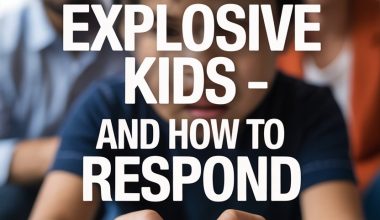If you’ve ever found yourself squinting at the closet darkness or checking under the bed for monsters because your child insists “something’s living in there,” take heart: you’re not alone, and neither is your kid.
Childhood fears are as common as mismatched socks in the laundry—and, just as mysteriously, they morph over time.
Understanding why children get scared (and of what, precisely) can help you respond with just the right blend of patience, reassurance, and the occasional extra cuddle.
Here’s what to know about the most typical childhood fears, age by age—and what you can do when your little one’s imagination runs a bit too wild.
Early Years: Infancy to Age 2
Babies might seem fearless—after all, who but a baby would try to eat a handful of sand or launch themselves off the sofa with a gleeful shriek? Yet, even the tiniest humans come equipped with a few hard‑wired worries.
Around eight months, separation anxiety usually kicks in. Your once‑cuddly infant morphs into a barnacle, clinging to you and wailing when you so much as leave the room. This is a sign that your baby now understands that you and they are separate people—and that you can actually leave them.
Strangers can also cause distress. Many babies eye newcomers with suspicion, preferring the familiar safety of their parents’ arms. Loud noises, sudden movements, and even bath time might prompt tears. Babies have no context for novelty, so vacuum cleaners and sneezes are as surprising as thunderclaps.
How to help? Consistency is your best mate. Give plenty of warm goodbyes and predictable routines. Reassure them with your voice and touch, even if you’re just ducking into the next room. When meeting new people, offer a gentle introduction and let your child warm up in their own time.
Toddlers: Ages 2 to 4
Welcome to the golden age of imagination. Suddenly, the shadows in the corner become witches’ hats and that odd lump under the duvet might be a dragon. Their grasp of reality is still forming, meaning that separating fantasy from fact isn’t always straightforward.
Common fears at this age include darkness, ghosts, monsters under the bed, and animals—especially dogs, thanks to their unpredictable barking. Toilets can also top the list (who decided flushing should sound like a rocket launch?).
During this stage, fear of separation often peaks again. Even the most confident toddler can turn into a human koala when you’re trying to get out the door.
Practical tactics? A night‑light is worth its weight in gold. Keep bedtime routines predictable and soothing. If monsters are the problem, “monster spray” (a bottle of water with a homemade label) can banish them with a squirt or two. Avoid teasing or dismissing their fears; instead, acknowledge their feelings and offer simple explanations. “That’s just the wind, not a dragon—it’s okay to feel worried, but you’re safe here.”
Preschoolers: Ages 4 to 6
As language and logic develop, so do the specifics of their worries. Preschoolers become more aware of the world around them, and with that awareness comes new anxieties.
Fear of the dark is a classic, but add to that thunderstorms, burglars, bad guys, and getting lost. Some kids start worrying about harm coming to their parents, often triggered by something they’ve overheard or seen on TV.
The vivid imagination of a preschooler can make these fears feel all too real. You may find yourself explaining, for the fiftieth time, how doors lock and how you’d never leave them behind at the supermarket.
What’s useful here? Keep explanations clear and honest, but also age‑appropriate. Offer reassurance and let them express their worries without shame. Storybooks featuring brave characters overcoming fears can be surprisingly effective—think of them as emotional training wheels.
Research shows that parents who validate feelings and model calm coping skills help children manage anxiety more successfully. A concise guide is available from the American Academy of Pediatrics.
Early Primary: Ages 6 to 9
Now logic and curiosity compete for airtime. Monsters under the bed begin to fade, but real‑world worries—natural disasters, illness, injury, or scary news—take root.
Some children develop a fear of failure or embarrassment. Social fears step into the spotlight as friendships and fitting‑in suddenly matter deeply.
How can you help? Keep communication wide open. Give them plenty of chances to talk and never belittle concerns. Practice run‑throughs—be the audience while they rehearse a presentation. Limit news exposure and discuss facts calmly.
Tweens: Ages 9 to 12
Welcome to the tween years—when anxieties shift inward. Fear of social rejection, perfectionism, and abstract worries about the future can loom large.
Your toolkit: empathy plus humor. Normalize their feelings, share your own childhood flops, encourage safe failures, and highlight resilience. If anxiety interferes with daily life, check in with your GP or a child psychologist. The Child Mind Institute offers excellent guidance.
Teenagers: 13 and Up
Teen fears revolve around self‑image, relationships, academics, and world events. Real talk helps: listen more than you speak, encourage healthy routines, and avoid minimizing their feelings. For extra support, see resources at Beyond Blue.
Why Kids Get Scared
Fear is a natural, adaptive response that keeps children close to caregivers and away from danger. As kids grow, their brains process new information and recalibrate what feels risky, so fears evolve over time.
When to Worry About Worry
If a fear begins to disrupt daily life—school refusal, chronic sleep problems, social withdrawal—seek professional help. Early support makes a world of difference.
A Word About Gender and Culture
Every child is unique. Gender roles, cultural stories, and family expectations influence which fears surface and how kids cope. There’s no universal script for bravery.
Helping Kids Face Their Fears
- Listen first—being heard shrinks fear.
- Model calm reactions; your response sets the tone.
- Use gradual, gentle exposure to build confidence.
- Praise effort and bravery, not just results.
- Keep routines steady, especially in times of change.
The Silver Lining
Most childhood fears fade with time and support. With your guidance, your child learns to manage big emotions, solve problems, and discover their courage—even if it’s hiding behind the sofa cushions today. And remember: you survived your own childhood worries. Your child will, too—even if they ask you to check under the bed, just one more time.





